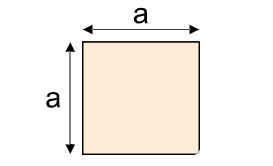1. What is the Area Calculator?
Definition: This calculator computes the area of various geometric shapes based on user inputs.
Purpose: It assists students, engineers, and designers in calculating areas for educational, architectural, and engineering applications.
2. How Does the Calculator Work?
The calculator uses specific formulas for each shape:
- Square: \( A = a^2 \)
- Rectangle: \( A = a \times b \)
- Triangle: \( A = \frac{b \times h}{2} \)
- Circle: \( A = \pi r^2 \)
- Semicircle: \( A = \frac{\pi r^2}{2} \)
- Sector: \( A = \frac{r^2 \theta}{2} \)
- Ellipse: \( A = \pi \times a \times b \)
- Trapezoid: \( A = \frac{(a + b) \times h}{2} \)
- Parallelogram: \( A = b \times h \)
- Rhombus: \( A = s^2 \times \sin(\theta) \)
- Kite: \( A = \frac{e \times f}{2} \)
- Regular Pentagon: \( A = \frac{a^2 \sqrt{25 + 10\sqrt{5}}}{4} \)
- Regular Hexagon: \( A = \frac{3\sqrt{3} \times a^2}{2} \)
- Regular Octagon: \( A = 2 \times (1 + \sqrt{2}) \times a^2 \)
- Annulus (Ring): \( A = \pi (R^2 - r^2) \)
- Regular Polygon: \( A = \frac{n \times a^2 \times \cot(\pi/n)}{4} \)
Steps:
- Select the shape from the dropdown menu.
- Enter the required dimensions and their units (mm, cm, m, in, or ft).
- Convert all inputs to SI units (m).
- Calculate the area using the appropriate formula.
- Convert the area to the selected output unit (mm², cm², m², in², or ft²).
- Display the result, formatted in scientific notation if the absolute value is less than 0.001, otherwise with 4 decimal places.
3. Importance of Area Calculation
Calculating areas is essential for:
Geometry: Understanding properties of shapes.
Design: Determining material requirements for various shapes.
Engineering: Analyzing structural components.
Education: Teaching fundamental mathematical concepts.
4. Using the Calculator
Example 1 (Square, Metric Units): Calculate the area of a square:
- Side: \( a = 5 \, \text{m} \);
- Output Unit: Square Meters;
- Area: \( A = 5 \times 5 = 25 \, \text{m}^2 \);
- Result: \( A = 25.0000 \, \text{m}^2 \).
Example 2 (Irregular Quadrilateral, Metric Units): Calculate the area of an irregular quadrilateral:
- Diagonal 1: \( e = 4 \, \text{m} \);
- Diagonal 2: \( f = 6 \, \text{m} \);
- Angle between diagonals: \( \alpha = 60^\circ \);
- Output Unit: Square Meters;
- Area: \( A = \frac{1}{2} \times 4 \times 6 \times \sin(60^\circ) = \frac{1}{2} \times 24 \times \frac{\sqrt{3}}{2} \approx 10.3923 \, \text{m}^2 \);
- Result: \( A = 10.3923 \, \text{m}^2 \).
5. Frequently Asked Questions (FAQ)
Q: Can I use different units for different inputs?
A: Yes, the calculator converts all inputs to meters internally and then converts the result to your selected output unit.
Q: What if my shape is not listed?
A: This calculator covers common shapes. For unlisted shapes, you may need to break them down into simpler shapes and sum their areas.
Q: Why is the area zero when inputs are zero?
A: If any dimension is zero, the area will be zero, as area requires positive dimensions.
 Home
Home
 Back
Back
